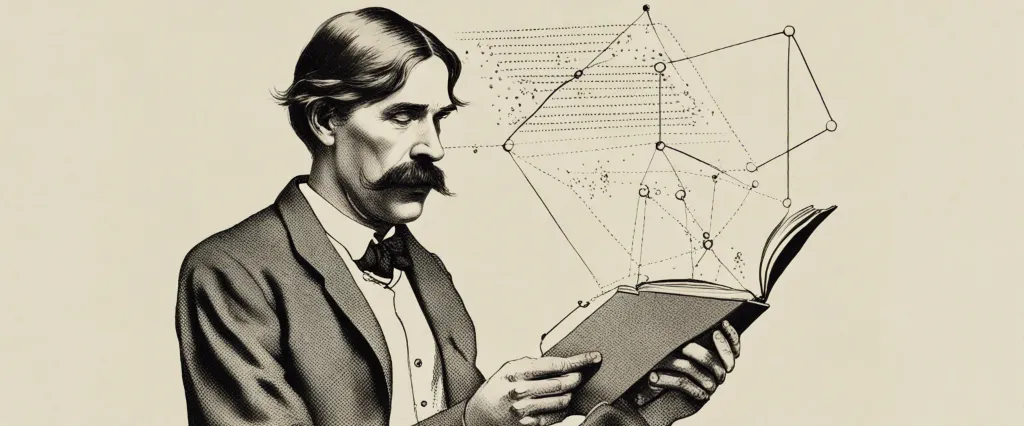
In his influential work, “The Theory of the Leisure Class,” Thorstein Veblen explores the concept of conspicuous consumption and its impact on society. Published in 1899, Veblen dissects the prevailing social and economic structures of the time, shedding light on the role of leisure and wealth in distinguishing social status. Veblen, an American economist and sociologist, was known for his critical analysis of the emerging capitalist society, and his examination of the leisure class holds significant relevance even in the modern world. Undoubtedly, his thought-provoking insights continue to shape our understanding of conspicuous consumption and its implications.
Chapter 1: Introduction to the Leisure Class
Chapter 1 of “The Theory of the Leisure Class” by Thorstein Veblen serves as an introduction to the concept of leisure class and provides a comprehensive overview of its characteristics and functions in society. Veblen aims to analyze the economic and social structure of the leisure class in order to understand the nature and implications of its existence.
Veblen introduces the concept of the leisure class as a segment of society that is distinguished by its exemption from productive labor. He argues that the leisure class arises from the development of a division of labor, where certain individuals are relieved of the necessity to engage in productive work due to their high social standing and inherited wealth. This class is primarily concerned with activities that are not directly related to the production and acquisition of wealth, such as conspicuous consumption and the pursuit of social distinction.
The author explores the mindset and behavior of the leisure class, highlighting its primary pursuit of conspicuous leisure and conspicuous consumption. Veblen asserts that the members of the leisure class engage in these activities as a means to demonstrate their superior social status and to maintain their position in society. The acquisition and display of material possessions, leisurely activities, and extravagant ceremonies become indicators of social desirability and power.
Moreover, Veblen argues that the emergence and perpetuation of the leisure class have significant consequences for the economic system. He suggests that the leisure class occupies a parasitic role, as their unproductive consumption is ultimately supported by the labor and toil of others. The leisure class’s emphasis on non-productive activities contributes to the inefficiency and wastefulness within the economic system.
In this opening chapter, Veblen sets the stage for a deep analysis of the leisure class, its social implications, and its impact on the functioning of society. The subsequent chapters will delve further into this theory, providing a comprehensive understanding of the role and influence of the leisure class.
Chapter 2: Conspicuous Consumption and Display
Chapter 2 of “The Theory of the Leisure Class” by Thorstein Veblen explores the concept of conspicuous consumption and the display of wealth in society. Veblen argues that in a capitalist society, individuals strive to gain social status and prestige by acquiring and displaying material goods that are considered desirable or valuable by their peers.
Veblen explains that conspicuous consumption is not driven by necessity or utility, but rather by the desire to demonstrate one’s superior wealth and social standing. He introduces the term “pecuniary emulation,” which refers to individuals imitating the consumption patterns of those higher in the social hierarchy. This emulation becomes a way for people to prove their worth and move up the social ladder.
According to Veblen, the items that are most desirable for conspicuous consumption are those that are wasteful, expensive, and even unnecessary. This is because the value of these goods lies not in their practicality, but in their ability to mark the consumer’s distinction from the lower classes. Veblen refers to this phenomenon as “conspicuous waste.”
Veblen also examines the role of leisure in this display of wealth. He argues that the higher social classes are able to indulge in leisure activities because their wealth allows them to be exempt from manual labor. Engaging in leisure becomes a way to further distinguish oneself from the working class, who do not have the luxury of time and resources for such activities.
In summary, chapter 2 of “The Theory of the Leisure Class” explores the concept of conspicuous consumption and the display of wealth as a means for individuals to gain social status and distinction. Veblen argues that this desire for prestige drives people to consume wasteful and expensive goods, and to engage in leisure activities that set them apart from the working class.
Chapter 3: The Pecuniary Culture of the Leisure Class
Chapter 3: The Pecuniary Culture of the Leisure Class, from Thorstein Veblen’s book The Theory of the Leisure Class, focuses on the role of money and its influence on the aristocratic leisure class. Veblen argues that the leisure class is primarily concerned with pecuniary emulation, which means that they strive to display their wealth and social status through conspicuous consumption and wasteful expenditures.
The chapter begins by discussing the evolution of wealth and how it has transformed from a means of achieving material comfort to a way of attaining social distinction and honor. According to Veblen, this change occurred as societies became more complex and the division of labor increased, resulting in the emergence of a leisure class that gained its social status through non-productive activities.
Veblen explains that the leisure class’s pecuniary culture is driven by the need to gain social distinction through a display of wealth. They engage in conspicuous consumption, where they spend lavishly on expensive goods and services that have no utility beyond signaling their superior wealth and social standing. This display of wasteful expenditure becomes a form of conspicuous leisure, as excessive consumption becomes a mark of belonging to the leisure class.
Furthermore, Veblen argues that the desire for pecuniary emulation leads to the creation of a distinct culture and way of life for the leisure class. They adopt various customs, manners, and tastes that are specific to their class, ultimately enforcing distinctions between different social classes.
Overall, Chapter 3 explores how the pursuit of pecuniary emulation shapes the culture and lifestyle of the leisure class, ultimately highlighting the importance of displaying wealth and social status in their society. This chapter provides a foundation for Veblen’s theory of conspicuous consumption and its impact on the socioeconomic structure of society.
Chapter 4: The Theory of Business Enterprise

Chapter 4 of “The Theory of the Leisure Class” by Thorstein Veblen, titled “The Theory of Business Enterprise,” discusses the emergence and role of business enterprises in modern society. Veblen aims to examine the underlying factors and dynamics of these enterprises to shed light on their influence on the social and economic structure.
The chapter begins with Veblen’s assertion that business enterprise is the prevailing form of economic organization in contemporary society. He argues that enterprises are primarily driven by profit motives and the accumulation of wealth, providing capitalists with symbolical dominance and social prestige. Veblen discusses how the pursuit of profit leads to the development of large-scale and centralized enterprises, resulting in the concentration of power and wealth among a minority.
Furthermore, Veblen examines the social divisions caused by the existence and functioning of business enterprises. He highlights the distinction between business and industry, defining the former as the embodiment of pecuniary gain and the latter as the direct production of goods and services. According to Veblen, the dominance of business enterprise creates a division between those engaged in the production process and those involved in finance and management.
Veblen also delves into the relationship between business enterprises and government, arguing that governments often act to further the interests of these enterprises, leading to mutually beneficial collaborations. He discusses the consequences of this partnership, including political corruption and the manipulation of legislative bodies to serve the economic elite.
In conclusion, Chapter 4 of “The Theory of the Leisure Class” presents an analysis of business enterprises and their impact on society. Veblen highlights the pursuit of profit, the concentration of wealth, and the resulting social divisions as key features of this economic organization. By exploring the relationship between business enterprises and government, Veblen reveals how these enterprises exert significant influence over the societal structure.
Chapter 5: The Evolution of the Industrial System
Chapter 5 of “The Theory of the Leisure Class” by Thorstein Veblen explores the evolution of the industrial system and how it has shaped society. Veblen argues that throughout history, societies have progressed from a predatory stage to a peaceful, industrial stage.
The chapter begins with an analysis of the predatory culture, where the primary concern was securing sustenance through hunting and warfare. Veblen explains that as societies developed agriculture and settled down, a new class emerged called the leisure class. This leisure class evolved from warriors, who were no longer needed to protect the settlement, and instead focused on consuming and displaying their wealth.
Veblen then delves into the evolutionary process that led to the rise of the industrial system. He explains that as societies became more complex, division of labor became crucial. This division of labor not only increased productivity but also created a distinction between manual and mental work. The leisure class, however, continued to maintain its position of power and prestige, as it controlled the means of production.
Veblen also discusses the emergence of technological advancements in the industrial era, such as machinery and automation. These advancements disrupted the traditional roles of the leisure class, as they shifted the power dynamics in favor of the working class. However, Veblen argues that the leisure class adapted by claiming ownership and control over these new technologies, thus maintaining their position of dominance.
Overall, Chapter 5 of “The Theory of the Leisure Class” explores the transition from a predatory society to an industrial society, highlighting the role of the leisure class and the impact of technological advancements on the power dynamics within society. Veblen’s analysis provides valuable insights into the historical development of the industrial system and the influence of social classes.
Chapter 6: The Higher Learning and the Leisure Class
Chapter 6 of “The Theory of the Leisure Class” by Thorstein Veblen, titled “The Higher Learning and the Leisure Class,” explores the relationship between education and the leisure class. Veblen argues that education is not solely driven by the pursuit of intellectual enlightenment but is greatly influenced by the social and economic standing of individuals within the leisure class.
He discusses how education serves as a mark of distinction and prestige among the leisure class, emphasizing that the primary purpose of education within this class is to maintain social standing and reinforce their privileged status. Veblen observes that higher education institutions, particularly universities, often cater to the demands and values of the leisure class. They offer courses that focus more on the “ceremonial” subjects, such as literature and fine arts, rather than practical skills or applied sciences.
The author critically examines the concept of “culture” within the leisure class, arguing that it is frequently associated with art, literature, and classical studies. He highlights how this narrow definition of culture serves to maintain and perpetuate the leisure class’s privileged position by distinguishing them from the working class, who engage in more practical and productive pursuits.
Veblen also discusses the role of universities in reinforcing the leisure class’s dominance by requiring significant financial resources for admission. This financial deterrent prevents individuals of lower economic standing from accessing higher education and positions of power. Furthermore, he criticizes the narrow social circles and intermarriage prevalent within the leisure class, which further entrench their privileged status and restrict the flow of knowledge and ideas.
In summary, Chapter 6 of “The Theory of the Leisure Class” explores how education within the leisure class is primarily driven by societal status and prestige rather than a thirst for knowledge. Veblen highlights the ways in which universities perpetuate this distinction and hinder social mobility, ultimately reinforcing the leisure class’s dominance and cultural hegemony.
Chapter 7: The Position of Women in the Leisure Class
Chapter 7 of “The Theory of the Leisure Class” by Thorstein Veblen describes the position of women in the leisure class during the time in which the book was written, which is the late 19th and early 20th centuries. Veblen argues that the leisure class, primarily composed of wealthy individuals, maintained a strict division of labor that assigned women to the role of conspicuous consumption.
According to Veblen, women in the leisure class were expected to focus on displaying their wealth through fashion, material possessions, and social events. Their main role was to serve as a means of conspicuous waste, symbolizing the wealth and status of their husbands or fathers. Veblen emphasizes that the ornamental function of women in the leisure class was predicated on their exclusion from productive or industrial labor.
Veblen also discusses how women in the leisure class were socially restricted. They were expected to behave in a manner that showed refinement and adherence to upper-class values. Their restricted confinement to the home was a means to protect them from anything that might tarnish their image. This further reinforced their position as symbols of status and their dependence on male family members for economic support.
Furthermore, Veblen explains that women’s conspicuous consumption also extended to their role as wives and mothers. The status of the family was conveyed through the display of their children’s achievements and upbringing. Women were expected to maintain social relationships that benefited their husbands’ careers and the family’s position in society.
Overall, Veblen argues that the position of women in the leisure class was one of subordination and exclusivity. Women were primarily valued for their role in conspicuous consumption and as status symbols for their male counterparts, rather than for their own individual contributions or abilities.

Chapter 8: The Future of the Leisure Class
Chapter 8 of “The Theory of the Leisure Class” by Thorstein Veblen, titled “The Future of the Leisure Class,” examines potential changes in the social and economic structure of the leisure class. Veblen begins by discussing the role of education in shaping society. He argues that the affluent class uses education as a means to maintain their status and power, ensuring that their children are brought up to inherit their luxurious lifestyle.
Veblen then explores the potential impact of industrialization on the leisure class. He suggests that as industrial production increases, society will become more efficient and focused on productivity. This, in turn, may weaken the position of the leisure class, as the value of their unproductive activities diminishes in relation to the productive ones. The rise of new technologies and the growing importance of science and engineering could possibly replace the leisure class’s traditional emphasis on conspicuous consumption with a higher value placed on productive work.
Moreover, Veblen predicts that the leisure class may face challenges from the rise of a new class—the industrial class. This class, driven by innovation and efficiency, would gradually surpass the leisure class in social standing and influence. Veblen argues that the industrial class would exhibit a new form of social distinction, based on innovation and merit rather than inherited wealth.
In conclusion, Veblen suggests that the future of the leisure class is uncertain. As industrialization progresses and society becomes more focused on productivity, the power and influence of the leisure class might diminish, potentially leading to the rise of a new class. Their traditional values based on ostentatious consumption might be replaced by a new social distinction characterized by ingenuity and productive work.
After Reading
In conclusion, “The Theory of the Leisure Class” by Thorstein Veblen explores the concept of conspicuous consumption and the hierarchical social structure that accompanies it. Veblen argues that the pursuit of wealth and material possessions is not only wasteful and inefficient but also perpetuates a system of inequality and social stratification. Through his insightful analysis, Veblen challenges the prevailing beliefs of his time, highlighting the detrimental effects of conspicuous consumption on both the individual and society as a whole. Ultimately, he calls for a reevaluation of societal values, advocating for a shift towards more productive and meaningful pursuits that prioritize the well-being of all members of society.
1. “Evicted: Poverty and Profit in the American City” by Matthew Desmond
This powerful book takes a deep dive into the issue of poverty in America through the lens of eviction. Matthew Desmond explores the lives of several families who struggle to keep a stable home, shedding light on the systemic issues that perpetuate poverty and homelessness. Just like “Nickel and Dimed,” “Evicted” provides a sobering portrayal of the realities faced by many low-income Americans.
2. The Warmth of Other Suns: The Epic Story of America’s Great Migration” by Isabel Wilkerson
Written by the same author as “Caste,” “The Warmth of Other Suns” tells the powerful and richly detailed story of the Great Migration, when millions of African Americans fled the Jim Crow South for northern and western cities. Isabel Wilkerson skillfully weaves together personal narratives and historical context, offering a profound understanding of the enduring impact of racial inequality and systemic discrimination.
3. “Stamped from the Beginning: The Definitive History of Racist Ideas in America” by Ibram X. Kendi
This comprehensive and thought-provoking work maps out the history of racist ideas in America, tracing their origins and showing how they have been embedded in the fabric of society. Ibram X. Kendi’s thorough research and compelling storytelling illuminate the various forms of racism that have shaped America, challenging readers to confront their own biases and dismantle systemic racism.
4. “The New Jim Crow: Mass Incarceration in the Age of Colorblindness” by Michelle Alexander
Michelle Alexander highlights the systemic racism within the United States criminal justice system, specifically focusing on the disproportionate impact it has on Black communities. Drawing parallels between modern mass incarceration and the historical oppression of African Americans, she exposes the hidden realities of racial bias and calls for urgent reform. “The New Jim Crow” provides an eye-opening examination of the enduring racial caste system in America.
5. “So You Want to Talk About Race” by Ijeoma Oluo
In this accessible and honest guide, Ijeoma Oluo tackles numerous questions and discussions surrounding race and racism in America. Drawing from her personal experiences as a woman of color, Oluo provides practical advice on how to engage in conversations about race constructively and with empathy. “So You Want to Talk About Race” acts as an essential tool for anyone seeking to understand and dismantle systemic racism.



